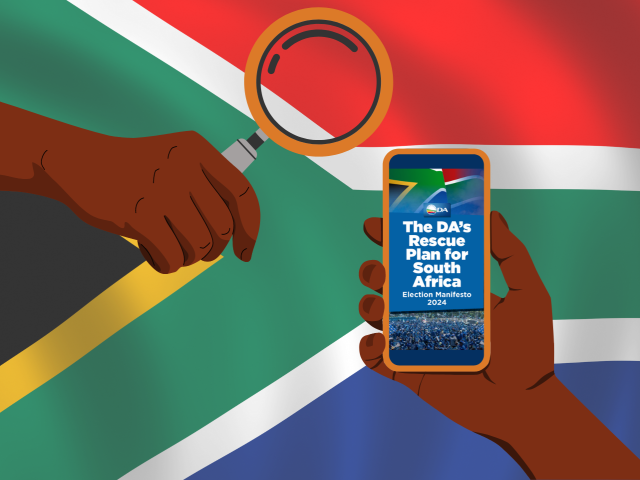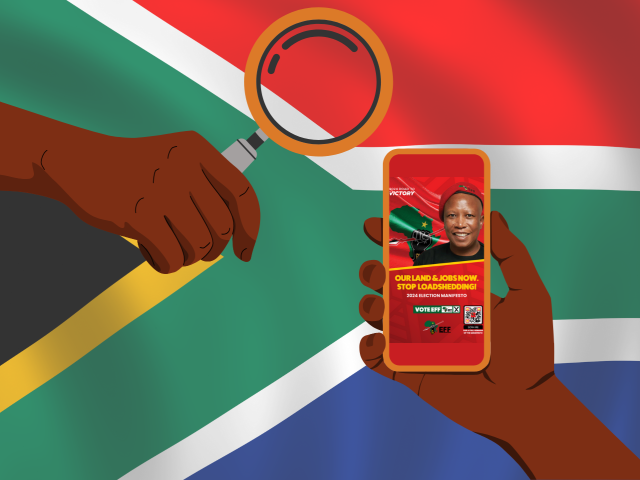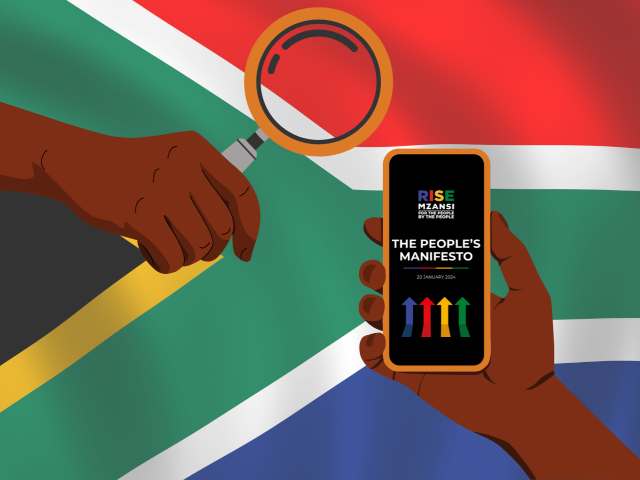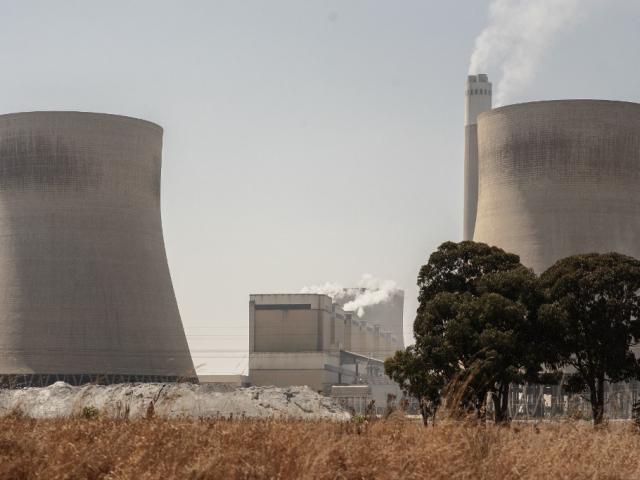An interesting – or, more likely, disturbing – fact: this November will mark the 16th anniversary of load shedding in South Africa.
The country has been experiencing electricity problems since November 2007, when the state-owned power utility Eskom began struggling to meet demand. At the time, then president Thabo Mbeki conceded that his government should have expanded capacity.
Since then, Eskom has regularly resorted to load shedding, which it says helps to balance supply and demand in order to avoid a national blackout.
With elections looming in 2024, the power cuts are a political football, with president Cyril Ramaphosa admitting in January 2023 that “everyone is fed up”.
In this factsheet, we answer some frequently asked questions about load shedding, including the cost to the economy, and what the worst-case scenario of a grid collapse would look like.
Award winning … once upon a time
Established in 1923 as the Electricity Supply Commission (Escom), Eskom is South Africa's power utility, responsible for the generation, transmission and distribution of electricity. These functions are now being unbundled into separate entities.
It hasn’t always been doom and gloom for the state-owned company. According to the Cape Town-based civil society research organisation Alternative Information and Development Centre, in 1994 Eskom had a “spare” capacity of 31% and electricity in South Africa was among the cheapest in the world.
The utility itself notes that in 2001 it won the Power Company of the Year award at a global energy ceremony in New York City, in the US.
1. What is load shedding?
Eskom describes load shedding as “a controlled process that responds to unplanned events in order to protect the electricity power system from a total blackout”.
In 2022, the Pan South African Language Board declared “load-shedding” its word of the year. That year saw the highest number of days with power cuts since they were introduced, with just over 200.
As of 15 August 2023, South Africa had already experienced 201 days of load shedding.
2. So, how does load shedding work?
The power utility says load shedding has two components:
- Load curtailment, where large customers such as industries are asked to reduce electricity use, a process that can take up to two hours
- Load shedding
Load shedding comes in stages, from one to eight at the time of writing. Each stage sees Eskom shed between 1,000 and 8,000 megawatts (MW) of power at specific times of the day in certain areas.
So stage one removes 1,000MW from the grid, stage two sheds 2,000MW, and so on.
“The higher the load shedding stages, the more frequently you will experience load shedding and the greater the number of affected customers,” Eskom says.
Lower levels of load shedding mean that Eskom can still stabilise the grid, replenish its generation reserves and continue to produce electricity.
At stage eight, consumers could be left in the dark for up to 48 hours over four days. The highest level officially reached by August 2023 was six. However, industry bodies were revising existing guidelines to include up to 16 levels, which analysts have said was more out of caution than necessity.
The bodies which operate under the umbrella of the National Rationalised Specifications Association of South Africa, or NRS, have been at pains to point out that media references to load shedding as being the same as “rolling blackouts” are “unfortunate and misleading”.
This, they say, is because the term load shedding “is an internationally accepted engineering term and understood to be for controlled load reduction by interrupting supply to customers on a rotational basis”.
In a nutshell, load shedding is controlled while a blackout is not. (Note: Read more on the different terms here).
The NRS, a voluntary group, plays a crucial role in the development of regulations that govern load shedding.
3. Who turns off the lights?
Once Eskom has determined the level of load shedding, municipalities or metros provide their own schedules for their areas. In some cases, Eskom develops the schedule but has said it “only directly supplies more than 6 million households which means that most of us are supplied by municipalities”. According to Statistics South Africa, there are an estimated 18 million households in the country.
Eskom’s national control centre is situated in Germiston, in the Gauteng province. Here, a team of engineers ensures that load shedding takes place as planned. They work in 12-hour shifts and are part of a 600-staff team at the facility.
This team monitors all regions in the provinces to ensure that municipal-level technicians comply with the load shedding schedule. Recently one large municipality – Ekurhuleni, a suburban region in eastern Gauteng – drew the ire of Eskom for its lax implementation of load shedding.
The technicians are responsible for switching power on and off at substations and are in constant contact with the control centre. (Note: If you have time on your hands, this popular TikTok video shows a technician hard at work switching off your power.)
Each substation supplies power to a number of areas that make up a block within a municipality. For example, block 1 in the City of Johannesburg might consist of 20 suburbs and townships.
4. Is anyone exempt from load shedding?
“There shouldn’t be any area that doesn't experience load shedding,” Eskom spokesperson Daphne Mokoena told Africa Check. “The code of practice document doesn’t allow us to discriminate against customers, where you load shed some and don’t load shed others. We need to apply it equitably.”
The load shedding code of practice to which she referred was developed by the NRS, which works closely with the government. It was last updated in 2019 and includes the following exemptions:
- National key points – sites that are important to the country’s security and economy. They include the Union Buildings, the official seat of government in Pretoria, parliament in Cape Town, and the headquarters of the South African Reserve Bank in Pretoria.
- The state-owned residences of ministers and their deputies. In a media interview, spokesperson for the department of public enterprises and administration Moses Moshe explained why: “Just like the president’s residence is a national key point, those residences, for the fact that they host members of the executive, they also become national key points. So the risk of load shedding for those properties is eliminated.” Moshe cited the safety of cabinet members and their need to be available to serve the country at all times as reasons for the decision. However, he said, their private homes were load shed.
- Other sites, such as commuter rail systems, water plants that supply power stations, refineries, some coal mines, fuel pipelines and electricity control centres. As of November 2022, 77 health facilities were exempt. The country’s health department said this was to minimise disruption to the provision of essential health services.
However, there have been several reports of patient’s lives being put at risk due to load shedding. In May 2023, the Pretoria high court ordered that all public hospitals, clinics, schools and police stations be exempted. The government was appealing the decision.
5. So, what is a grid collapse?
Eskom describes a total blackout as an “uncontrolled loss of energy in the entire power system”. It occurs when there is “too much electricity demand and too little supply, bringing the power system into an imbalance and consequently tripping the power system in its entirety”.
According to Gav Hurford, Eskom’s national control manager for system operator and transmission, the grid operates at 50 hertz. Hertz is a unit of frequency.
Prof Thinus Booysen, from the department of electrical and electronic engineering at the University of Stellenbosch, told radio station CapeTalk in November 2021 that it was crucial that demand never outstripped supply.
“When demand outstrips supply, that 50 hertz goes down slightly. If generators can’t bear the brunt, one by one the generators will shut down if nothing is done to demand. Then we have a blackout.”
A total collapse of the grid would take seconds, Booysen told the station.
Eskom has said that in the event of a total grid collapse, there would be little-to-no warning: “At best, the system operator may be able to alert the country should the system be at increased risk.”
The system operator is responsible for keeping supply and demand in balance at all times, and for deciding what level of load shedding is necessary.
In a much-cited presentation carried by the National Science and Technology Forum in November 2021, Hurford said that, in general, major blackouts started with a fault in the transmission system, which knocked out the generator, leading to a cascading event.
Technological error could also contribute to the complete collapse of the grid.
Considering all the scenarios that could lead to a grid collapse, Prof Hartmut Winkler, an energy analyst at the University of Johannesburg, told radio station Voice of the Cape in May 2023 that it could even happen “when there’s no load shedding at all” simply because demand could outstrip supply at “any moment”.
“But load shedding is designed to prevent exactly that from happening and it doesn’t mean that the higher the stage, the closer you’re getting to a grid collapse.”
6. But what would a grid collapse look like?
There has been no shortage of dire scenarios painted, from politicians and political parties to energy analysts and even Eskom itself, which said a national blackout would have “serious consequences”.
In the event of a total grid failure, Eskom has warned of widespread looting, hospital deaths, morgues running out of space and the possibility of explosions at power stations as they try to restore power.
Telecommunications would be affected, as would the internet as mobile network operators would have no coverage. The country’s telecoms industry has said it was considering this, even if chances of a collapse were “slim”.
The banking sector is also dependent on information and communication technology, or ICT. If people couldn’t access their money or make payments, this too could lead to civil unrest, according to South African thinktank the Institute of Security Studies.
A grid failure could also leave the country without water. “Our water reserves would be severely impacted,” said Hurford. South Africa's infrastructure uses electricity to pump water through various structures until it reaches the consumer. Even a power failure at a pumping station could cause water levels to drop, as they have in the past.
But Eskom says it has guidelines for most municipalities on what to do in the event of a grid failure to ensure that water would still be available. A total blackout would also affect fuel supplies, which would be expected to run out within days.
7. But what are the chances of a grid collapse?
Eskom rarely misses an opportunity to remind consumers that a grid collapse is unlikely. “Higher levels of load shedding do not mean that we are at a higher risk of a national blackout – we implement load shedding to ensure that we prevent a national blackout,” it has said.
In a statement on 16 May, the power utility said it had measures in place to prevent a failure. “The risk of a national blackout, while inherent to the operation of a large power system, has an extremely low likelihood of materialising given the implementation of a number of control measures, including load shedding.”
Eskom has insisted there was “no chance” of a total national blackout because of the way it monitored the system. It has, however, admitted that the situation was possible, but that it would take “an unforeseen and sudden sequence of events that results in a cascading collapse of the transmission or generation system, leading to a complete loss of supply across the country”.
The utility reportedly has up to six barriers to prevent a grid collapse, ranging from equipment design and internal operating procedures to emergency response.
Essentially, the utility said, many things would have to go wrong at the same time for the grid to collapse.
Speaking in parliament on 1 June, electricity minister Kgosientsho Ramokgopa said: “A national blackout or grid collapse remains highly improbable as multiple safeguards are in place to ensure that it does not occur.”
The NRS chair Vally Padayachee told the National Press Club on 21 June that “a potential national grid collapse though technically is not impossible but it is virtually not probable at all”.
He explained how it would happen. “It’s caused by an unexpected and sudden event in the transmission network that cascades and eventually results in generators protecting themselves and separating from the network.
“When we get to the situation where the supply cannot meet the demand, the system automatically takes over and it would get into a blackout situation. There are a number of interventions for that which prevent that from happening.”
But the country had never had a total blackout in Eskom’s 100-year history, Padayachee said. Load shedding was one “excellent” intervention.
8. What would a re-start entail?
Power stations use some of the electricity they generate to run equipment such as conveyor belts that feed coal into furnaces.
In the event of a total grid failure, a black start would be required. A small diesel generator could be used to power up a larger one, and so on, until a plant is running again.
Eskom has said that while other countries can tap into a power system elsewhere, “unfortunately in South Africa, we have to rely on ourselves to start the system from scratch – energising one power plant at a time and one section of the country at a time”.
The power utility has black-start facilities, where its officials carry out dry runs in preparation for restoring power.
It estimates that it would take up to two weeks to restore power, although some experts have said it could be even longer if there were severe damage.
9. What is the cost of load shedding?
Businesses have seen a reduction in production and ultimately, profits, by being in the dark for hours on end. Some experts have put the cost of load shedding countrywide at billions of rands per year. But estimates vary, depending on a number of factors.
In an interview with the news channel Newzroom Afrika in June, Ramokgopa said one stage of load shedding cost R300 billion. It’s not clear which period he was referring to.
The South African Reserve Bank uses the average stages and the number of days of power cuts to calculate the cost per stage of load shedding. This ranged from up to R1.2 million for stages one and two and from R204 million to R899 million for stages three to six, it said.
Financial services giant Investec, on the other hand, has said the blackouts cost the economy R300 billion in 2022 alone.
An Eskom report from 2020 estimated that load shedding cost the South African economy nearly R35 billion between 2007 and 2019.
In short, load shedding leads to less economic activity, fewer companies planning to expand and ultimately fewer jobs created, senior economist Geoff Nolting from the state-owned Public Investment Corporation told Africa Check.
10. What mitigation measures is the government taking?
In July 2022, Ramaphosa announced a series of measures in response to the energy crisis.
“South Africa has installed capacity to produce approximately 46,000MW of electricity, and at peak times we use about 32,000MW of electricity. However, only 60% of this installed capacity is available at any given time due to some units going through planned maintenance and others having unplanned outages,” he said.
To remedy this, a national energy crisis committee would be set up and Eskom would build its first solar and battery storage projects at several power stations. The utility’s budget for critical maintenance would also be increased, power imported from Botswana and Zambia, and power purchased from existing independent power producers.
Soon after, the crisis committee began implementing an energy action plan. In a six-month progress report in January 2023, the committee said an additional 300MW had been imported from neighbouring countries.
The government also declared a state of disaster in February. This, it said, was to deal with the crisis in a less bureaucratic way, with extra resources and less oversight.
But legal challenges soon followed, with civil rights organisations and some political parties calling the decision irrational. The state of energy disaster was lifted in April.
Ramaphosa has also created the post of and named an electricity minister – Kgosientsho Ramokgopa – responsible for “coordinating the government’s response to the electricity crisis as a national priority”.








Add new comment